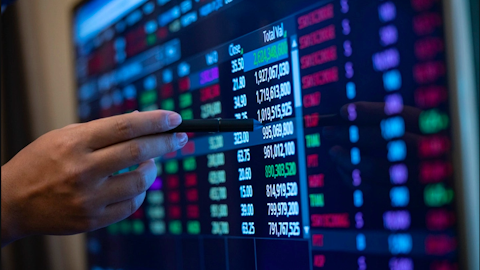Fredrik Westin: Yes. I mean, for ’23, I mean, the main contributors will be the carryover effect and then the incremental additional pricing versus what would you compare what the pricing point was going into last year, and then, of course, the organic growth that we see excluding pricing. And also, the two main components that are the positive drivers. But then, don’t neglect that we’re also laying out here that we do see quite significant inflationary headwinds, and the largest part of that is actually on the value-add components that we see from our supply base, and then followed by our labor cost inflation that we expect, and then, to a smaller extent, on logistics and utilities. If you then look at going beyond that, it is the continued volume growth that we expect and also delivering on the market share expansion, so the launch activities that will drive up the margin further, further improvement from the strategic initiatives that you do see that are starting to bite and have effects.
And then, the variable component is, of course, what is the incremental inflation effect that we then need to offset either through further costs reduction activities or through negotiations with our customers, and also the main building blocks both for ’23, but then also beyond.
Rod Lache: Okay. Maybe just lastly, can you quantify the labor energy and logistics inflation that you need to offset? And are you saying that you will set it for the full year or by the end of the year?
Fredrik Westin: We would offset it by the end of the year, hence also the somewhat lower margin that we’re indicating in the first quarter and that’s also due to the — there is a calendar year effect of how some of these inflationary components come in, not the least on the labor cost side. What I can indicate is that, I mean, as I said, the highest headwind we’re facing or what we’re expecting is in — on the value-add component of our suppliers, the components that we procure, and then followed by labor, and then the smallest component being, as I said, logistics and utilities. Overall, it is less than what we had in terms of raw material headwinds in 2022.
Rod Lache: Okay. Thank you.
Fredrik Westin: Thanks.
Operator: We are now going to proceed with our next question. The questions come from the line of Mattias Holmberg from DNB Markets. Please ask your question.
Mattias Holmberg: Hello, and thank you. I wonder if you could break down the outperformance of 12% versus light vehicle production in 2023 a bit. So, is the delta versus the 4% outperformance target all the price increases or are there any other moving parts that you can quantify? And if you don’t want to quantify, perhaps you could just rank the different drivers in order of importance that adds up to 12%, please?
Fredrik Westin: Sure. So, it is — I mean, the largest component will be price. And as I said, it’s both the carryover effect from 2022, but then also the incremental pricing that we’re expecting, that’s the largest contributor, then followed by pretty much an even levels CPV growth and the underlying LVP growth, and then you also have market share gains that we expect to be larger in 2023 than they were in 2022. So — and to be clear, not only LVP, but also then the third component is that — the launches that we have here.





